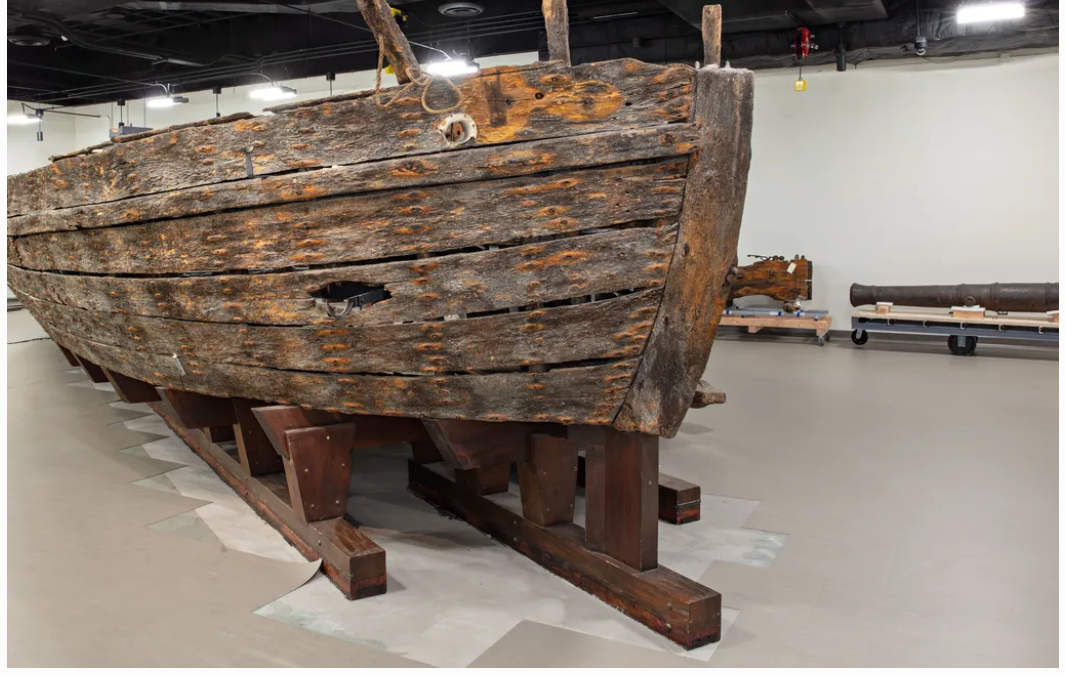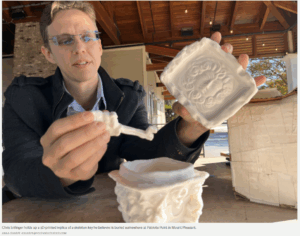Badly damaged during the Battle of Valcour Island, the “Philadelphia” is now the focus of a new exhibition at the Smithsonian’s National Museum of American History
In October 1776, a small American fleet clashed with British warships on Lake Champlain during the Battle of Valcour Island. One of the American ships, the Philadelphia, was badly damaged in the fighting and eventually sank to the bottom of the lake, where it remained until it was raised in 1935.
Now, the hastily built gunboat is the focus of an interactive exhibition at the Smithsonian’s National Museum of American History. During “The Gunboat Philadelphia Preservation Project,” which opens August 22, visitors can watch in real-time as experts carefully study and preserve the 249-year-old vessel. The conservation work is expected to wrap up next summer, just in time for the nation’s 250th anniversary festivities.
“The Philadelphia remains as a powerful symbol of the earliest days of the Revolutionary War and emergence of the new nation,” says Anthea M. Hartig, the museum’s director, in a statement. “Because of its age and condition, the gunboat is in critical need of conservation treatment to ensure its long-term preservation. The nation’s upcoming 250th celebration is an ideal time to spotlight and share the rich history of this National Historic Landmark.”
The Philadelphia was constructed quickly during the summer of 1776. Several months later, when British forces invaded Lake Champlain in a bid to reach the upper Hudson River valley, it was one of several ships sent in to defend the region. The small American fleet was commanded by Benedict Arnold, the celebrated Continental Army general who later defected to the British.
In the end, the British defeated the Americans on Lake Champlain. Nearly 200 American sailors were killed or captured during the fighting, and 11 ships were either seized or destroyed, according to the American Battlefield Trust. Although the Patriots lost, they succeeded in delaying the British fleet’s forward progress until the spring of 1777, when it faced a stronger American contingent and was forced to surrender at Saratoga.
Struck by a 24-pound cannonball near its bow, the Philadelphia sank roughly an hour after the battle ended. It remained on the bottom of Lake Champlain until Lorenzo Hagglund—a salvage engineer and World War I veteran—discovered it more than 150 years later. Hagglund led a team that successfully recovered the vessel, which was on display in the Lake Champlain region until 1961.
Hagglund, who died in 1960, left the ship to the Smithsonian in his will. In 1964, the vessel and the cannonball that sank it were transported to the new National Museum of History and Technology, which later became the National Museum of American History. (A model of the Philadelphia is also on display at the National Museum of the U.S. Navy.)
In recent years, the Philadelphia’s timbers have started shrinking, and its iron fittings have started to disintegrate. The museum hired a team of underwater archaeologists and maritime conservators from Texas A&M University to assess the vessel’s condition. Their findings will help the museum develop a treatment plan to ensure the long-term survival of the historic gunboat.
/https://tf-cmsv2-smithsonianmag-media.s3.amazonaws.com/filer_public/bd/b7/bdb7577c-a5d5-4a81-8989-85892d2c3587/jn2025-01089.jpg)
The experts are considering how temperature, humidity levels and vibrations in the museum might be affecting the vessel. They’re also investigating the effects of the liquid nylon that was applied to the ship’s outer surface in the 1960s, and they’re conducting tests to ascertain the structural integrity of the vessel’s timbers.
The project started in the spring of 2019 with funding from the museum’s board. In late 2023, the National Park Service awarded a $750,000 grant to the initiative through its Save America’s Treasures program. Americana Corner, an organization dedicated to preserving and sharing the story of America’s founding, also contributed $1 million for the conservation work.
As part of the new exhibition, museumgoers will be able to watch the process unfold through viewing windows. They will also be able to learn about the ship’s construction and discover the stories of the Americans who helped build the fleet that defended Lake Champlain.
“This boat’s fragile condition is symbolic of our democracy; it requires the nation’s attention and vigilance to preserve it for future generations,” says Jennifer Jones, project director for the conservation project and exhibition, in the statement.
–smithsonianmag.com



